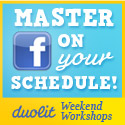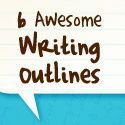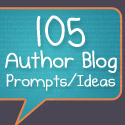Note: For an updated version of the information below, download Self-Publishing Basic Training for FREE (you’ll also get some nifty extras)!
Stop biting your nails and looking fretfully over your shoulder, it will be okay! I promise!
I know that to many authors (myself included) the editing step of the publishing process can seem both terrifying and intimidating. Along our path to success, this is the first step when we start to seriously consider retreat as a viable option.
It’s not.
So far in our two week-long series of Self Publishing Basic Training we’ve covered the initial pre-writing planning and decision stage and the writing process itself, which brings us to the dark and tumultuous world of editing. This is the part where you have to take the piece of word art you’ve poured yourself into for months (or in many cases, years) and do the absolutely unthinkable: Let someone else read it.
Wait! Don’t head for the hills just yet! They say that the joy of love is only so great because we take the ultimate risk to find it, putting ourselves out there and taking the chance of getting hurt. This is no different. Your success will mean even more because you know how easily it could have been crushed into the ground.
There are two specific types of editing we need to address, because they are very different but of equal importance:
1. Copy Editing
At least one (preferably two) qualified individual needs to read over your manuscript from cover to cover in an effort to seek out those nasty typos and misspellings that your word processor didn’t catch. The key in the previous sentence was qualified. I’m sure your mom would love to read your book, as would your significant other and that overly friendly neighbor who brings Jell-O salad to block parties. But unless one of those three people is either an English teacher or a professional editor, you can’t rely on them to truly proofread your book. Try to find a local high school or college English teacher who would be willing to copy edit your work (Lord knows most of them could use some extra cash on the side) or track down a copy editor online.
- Bonus Tip: Find someone who can accept an electronic version of your manuscript. Use a program like Microsoft Word if you can so you can see the edits that have been made when the file is returned to you and decide if there are any you don’t want to make.
2. Content Editing
You also need to have at least one qualified individual read over your manuscript for content issues. This can be anything from problems with your timeline or general book flow that might cause confusion to lapses in tense and point of view distractions. They can tell you if your opening chapter will really grab people, if your scenes are lacking emotion or if your characters aren’t quite strong enough. This is the part that can really sting, but if you take it as constructive criticism and really open your mind, I think you’ll find that a qualified editor can make your manuscript even better than it already was.
- Bonus Tip: Read this great article by Victory Crayne about the differences in copy and content editing for more details on both.
Finding a Content Editor
Now I know what you’re thinking, “Shannon, you told me where to find a good copy editor, but where can I find a great content editor?” Well, that’s a good question. Content editing is the one and only service in the self-publishing process that we don’t offer at Duolit. It’s an important job that requires a very qualified person, and while we are quite multi-talented, neither Toni nor I feel like we can give a client 100% satisfaction in this task.
But fear not! We do have some great resources where you can find qualified editors to look over your project:
- Jason Boog recently posted this list of The Best Book Editors on Twitter with short blurbs and contact information for a variety of editors you can meet through Twitter.
- Edit 911 is one of the most professional editing companies we’ve come across on the web. They have 52 PhDs on staff and promise both speed and quality every time, 100% guaranteed.
If you have experience working with some great editors, feel free to share their info in the comments if you think other authors could benefit from their services.
You can definitely find more editing resources through a Google search, but be sure to check their credentials and get a few references before you sign on to do business. Just like we talked about with designers, it’s important to find the editor who’s right for you. Find someone who will understand your voice and your goals so they can help you make sure that both come out crystal clear.
We’re going to go ahead with our weekly links post tomorrow and then resume our Self Publishing Basic Training series after the weekend. Next week we’ll focus on the meat and potatoes of the process–picking your (self-)publisher.
Later days,
– Shannon
This post is part of our Self-Publishing Basics series. Don’t miss a post — subscribe to our RSS feed or receive posts via e-mail.


 We're
We're 








